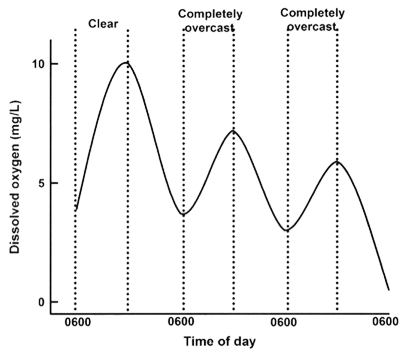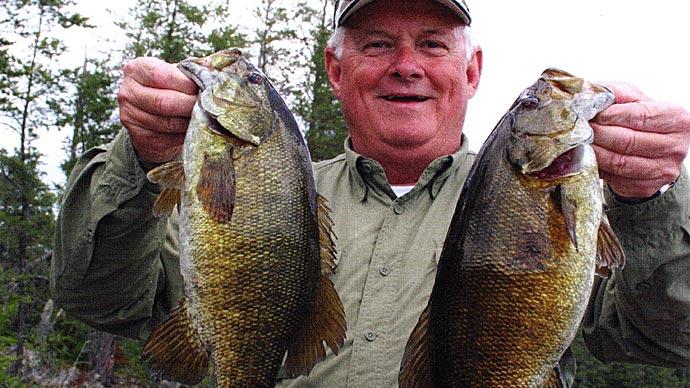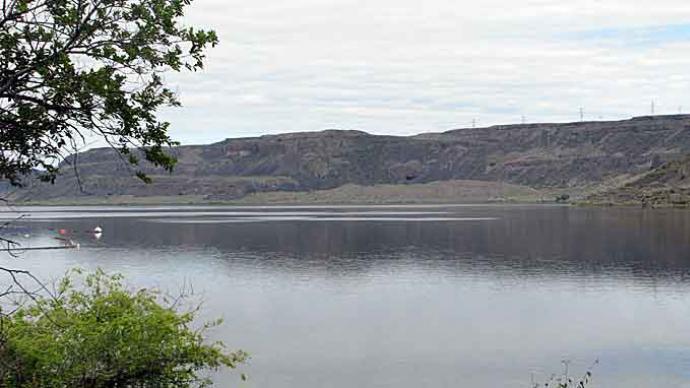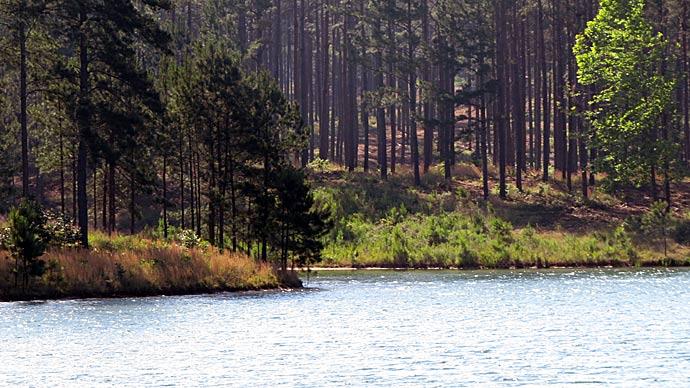
The future is impossible to predict with a high degree of accuracy; but, at least one aspect is certain. We will have weather, and at most locations, it will be in a state of more-or-less continuous change. Although seasonal weather patterns are more predictable than day-to-day changes, seasonal weather varies from year to year. I thought that it would be interesting to discuss the influence of weather on water quality in sportfish ponds.
Rainfall is critical for most ponds by supplying surface runoff to fill them. Of course, in summer, little runoff occurs after most storms, but rain falling directly into ponds usually replaces evaporation and seepage losses, and water level and water quality remain largely unaffected. Drought during winter and spring can prevent ponds from filling completely. A drought in summer, and especially after a dry winter and spring, can result in particularly low water levels. When water levels decline, dissolved substances in water accumulate to higher concentrations, fish are crowded into a smaller volume, and water quality deteriorates. This is a stressful condition for fish that can reduce growth, lessen reproduction, and possibly cause mortality.
Years with very high rainfall have more or less the opposite effect on water quality. Ponds are flushed thoroughly and nutrients are lost. Although water quality may remain acceptable with respect to most variables, additional fertilization may be needed to replace nutrients flushed from ponds. In areas where liming is necessary, wet years lessen the residual effect of the previous application of liming material, and reliming may be necessary.
Ponds often stratify thermally in summer (Fig. 1), and the deeper, cooler, denser layer of water called the hypolimnion does not mix with the warmer, less dense, surface water layer known as the epilimnion. Heavy rainfall events and winds associated with cold fronts that may occasionally pass through in summer can cause thermal destratification. Rainfall is cooler and denser than pond surface water, and may sink through the epilimnion to cause upwelling. Cooler runoff can flow under the surface water, also causing up- welling, and strong winds mix the hypolimnion and epilimnion. Hypolimnetic water typically is devoid of oxygen. It also may contain considerable organic material resulting from dead plankton that settled from the epilimnion and contain reduced inorganic substances such as ferrous iron originating in the oxygen-devoid sediment. Dilution of the epilimnetic water by the oxygen- depleted hypolimnetic water, plus oxidation of organic matter, and reduced inorganic matter can lead to oxygen depletion and fish kills.
Pondmeisters know this event as a turnover.

I have often been asked whether rain falling into a pond can provide oxygenation. The answer is yes, because rain is saturated with oxygen and it also splashes the water surface, creating more area for absorption of oxygen from the atmosphere. However, the resulting increase in dissolved oxygen concentration is usually insignificant. Strong wind, by comparison, has a much greater effect on oxygenation than does rainfall. Wind causes waves that facilitate oxygen absorption. Water will not absorb oxygen from the atmosphere when it is supersaturated with dissolved oxygen. In ponds, surface water often is supersaturated in daytime, and wind hastens loss of oxygen to the air. But, at night water is under-saturated with oxygen and the reverse situation will occur.
Rain contains nitrate produced from nitrogen gas in the atmosphere by the action of lightning. Thus, rainfall adds some nitrate, a nutrient for phytoplankton, but not enough to minimize the need for nitrogen fertilization of sportfish ponds.
Fertilized ponds typically contain an abundance of blue-green algae. These organisms often float to the surface, and wind driven currents cause scums of blue-green algae in areas along the shore creating an unsightly, odorous mess. In calm, clear weather, huge scums of blue-green algae may become moribund at the surface and die in massive quantities - this phenomenon is called a phytoplankton die-off. Decomposition of the dead algae can lead to oxygen depletion and fish kills.
In periods of prolonged overcast skies, phytoplankton photosynthesis does not produce as much oxygen as it produces during clear or partly cloudy days. The consumption of dissolved oxygen from the water column continues at its normal rate. Thus, the afternoon dissolved oxygen concentration is not as high as normal, and the early morning dissolved oxygen concentration is lower than normal (Fig. 2). Depending upon the plankton density in ponds, after two or more days of overcast skies, the morning dissolved oxygen concentration may be so low as to severely stress or kill fish. A scenario likely to lead to a fish kill is a very dense phytoplankton bloom, warm, calm weather, and heavy overcast skies for several days.
In cooler seasons, overcast skies usually do not present a low dissolved oxygen problem. Phytoplankton blooms are usually less dense, water is cooler, and oxygen demand by fish and other organisms is less, and windier conditions usually persist.
The growing season of some years has more sunlight than occurs in other years. Photosynthesis requires light, and years with less light may have less phytoplankton growth than other years. This has not been studied well, but we once found greater fish production in research ponds fertilized at the same rate during two successive years. The year with the greater production had about 15% more solar radiation between March and October than did the other year.
It has been claimed that fish can be caught more readily on hook and line when the barometric pressure is high than when it is low. Ellis Prather, who worked for many years in the fisheries program at Auburn University, tried to verify this years ago by recording the pressure daily, and keeping catch records for some fee- fishing ponds operated on the fisheries research station. He collected these data for several years, but never published the results. However, he indicated to me that he could not find a clear trend between barometric pressure and fishing success.
Weather obviously has a major influence on water quality in sportfish ponds, but there is not much that the pond owner can do about the weather other than watching it change and dress accordingly. The problem of sudden thermal destratification can be avoided by installing destratifers in ponds. Surface aerators also can be installed and operated in event of an unexpected dissolved oxygen depletion event. Fertilization is necessary in most southern ponds to allow good fishing, but the fertilizer dose should be controlled to avoid over-fertilization and excessive phytoplankton blooms.
Water-level control in ponds is based mainly on designing ponds so that pond volume does not exceed the capacity of local rainfall and runoff to maintain water levels. Sometimes there may be a well of high yield near a pond that can provide supplemental water. Of course, ponds that seep excessively are particularly susceptible to low water level in dry weather.
Reprinted with permission from Pond Boss Magazine



